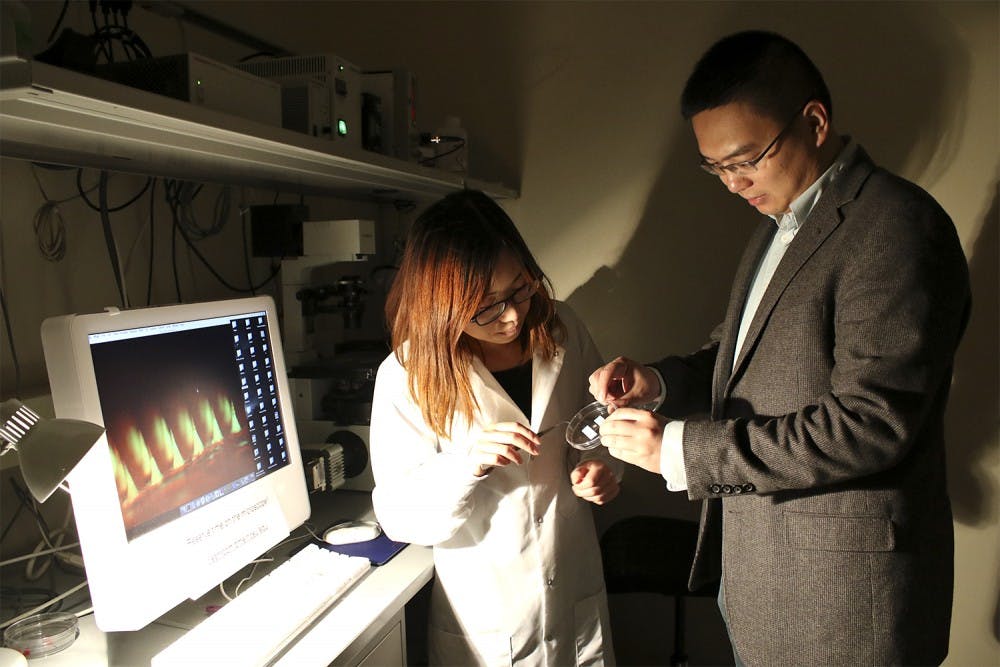The winning photo is a fluorescent microscopic image of the smart insulin patch’s microneedles.
“‘Smart’ means that the insulin patch has glucose-responsive elements embedded inside,” Gu said. “They can sense the glucose levels, and they can release insulin at the right time.”
Gu said this microneedle technology allows the treatment to be simple and painless.
“This is our motivation — to make things more precise and more convenient,” he said.
Though Gu thinks the image is beautiful, he was surprised that the magazine recognized the image.
“One of my friends actually told me,” Gu said. “They sent me an email saying, ‘Congratulations,’ and I was like, ‘What?’”
Gu said he thinks the image received the award because of its high quality but more importantly because of the impact his and his team’s research will have.
Nala Rogers, who wrote the article for Science, said the list acknowledged substantial research and quality images.




